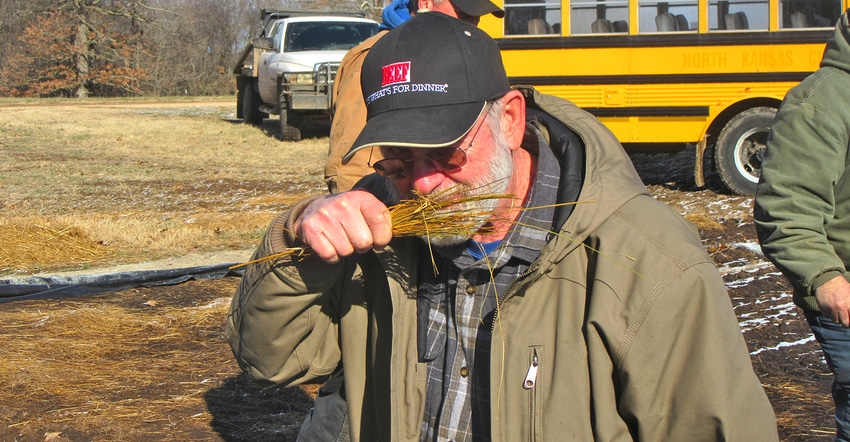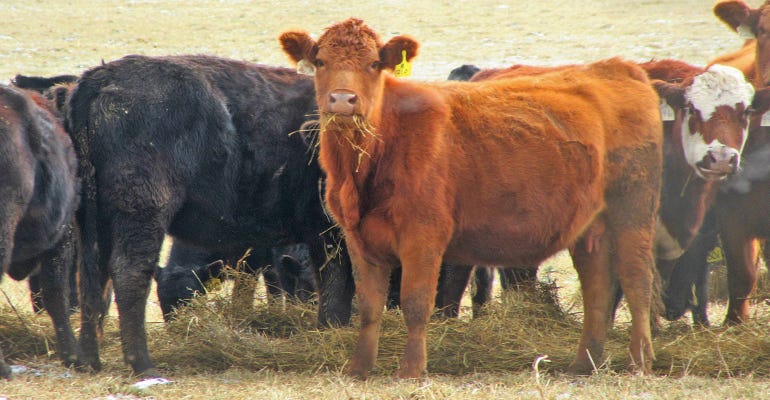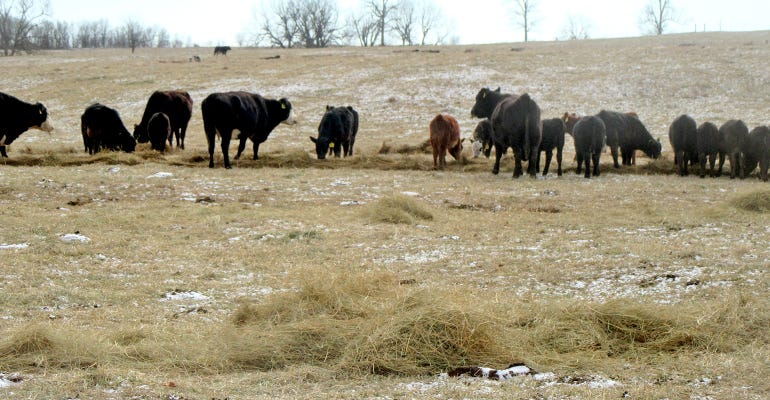March 1, 2019

Cows and calves ran to the hay bale unrolled on top of pasture ground at the University of Missouri Southwest Research Center. They stopped, sniffed and then began to eat.
The low-quality fescue bale was treated last year with anhydrous ammonia, and MU livestock specialist Eldon Cole wanted to know how cattle would respond.
People gathered at the center south of Mount Vernon to learn about feeding anhydrous ammonia-treated hay. Cole created a show, tell and smell activity for the farmers and ranchers where an untreated, 2-year-old fescue bale was rolled out followed by a treated bale about eight minutes later.
“When the two different bales were unrolled,” Cole said, “not one single cow or calf out of 115 head stayed to eat the untreated hay.”
The low-quality fescue hay was treated in early July with 2.5% anhydrous ammonia. The 109 bales weighing 910 pounds each were stacked and covered with a six mil plastic. The cost per bale, Cole said, was $10.61.
The three stacks remained covered until Jan. 4, when the center began feeding its fall-calving beef cow herd the ammoniated hay.
Tests taken in July 2018 showed a crude protein level of 9.4%, total digestible nutrients of 51.7%, neutral detergent fiber at 64.4%, and relative feed value of 79. Tests on the same bales when the stack was opened showed CP of 15.4%, TDN at 51.8%, NDF of 58.2%, and RFV of 87.

IMPROVED FORAGE: Poor quality fescue hay was an issue across much of Missouri last year. University of Missouri Extension livestock specialists treated the hay with anhydrous ammonia. Cattle got their first smell and taste of the hay earlier this winter. Photo by MU Extension

Problem area
Farmers raised several questions about side effects from eating the infused hay.
Toxicity may occur if too-high-quality hay is treated. Examples would be alfalfa, sorghum x sudan, small grain hays and low NDF warm- or cool-season grass.
Symptoms such as nervousness, circling, convulsions, running through fences and sometimes death can occur. Cole said the toxin causing the problems is 4-methylimidazole. It can be transmitted through milk, and young calves may die from it.

GOOD EATS: Cattle preferred the taste of the ammoniated hay seen in the background. The hay in the foreground was not treated. Photo by MU Extension

Take precautions
Precautions to take include:
limiting anhydrous ammonia to 4%
not treating hay that contains wet spots as the anhydrous moves toward moisture
weighing hay so you know the amount of anhydrous to add
Staff at MU’s Southwest Research Center only noticed a couple of cows that acted unusual after the first few feedings. “They might have eaten more than their share of some ‘wet spot’ hay,” Cole said. “Since the calves were older, no problems were noted with them.”
Humans should take a few precautions, too. Always be careful when opening the stack as the ammonia smell can be strong and will open your sinuses. Cole suggested using protective gear when needed. Having someone with you adds to the safety factor.
Source: University of Missouri Extension, which is solely responsible for the information provided and is wholly owned by the source. Informa Business Media and all its subsidiaries are not responsible for any of the content contained in this information asset.
You May Also Like




